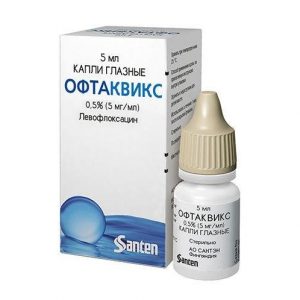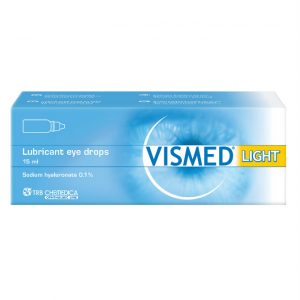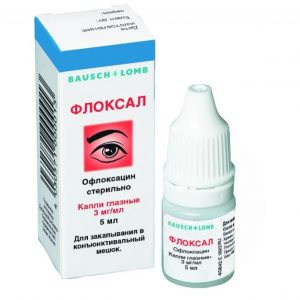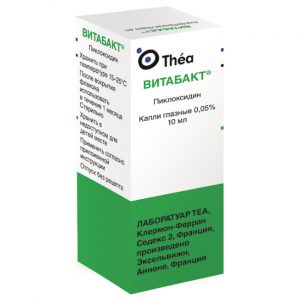Description
Release form
Eye drops
Pharmacological action
A broad-spectrum antimicrobial agent, a derivative of fluoroquinolone, inhibits bacterial DNA gyrase (topoisomerases II and IV, responsible for the process of supercoiling of chromosomal DNA around nuclear RNA, what is necessary for reading genetic information) disrupts DNA synthesis, the growth and division of bacteria causes pronounced morphological changes (including cell walls and membranes) and the rapid death of a bacterial cell.
It acts bactericidal on gram-negative organisms during dormancy and division (since it affects not only DNA gyrase, but also causes cell wall lysis), and gram-positive microorganisms only during division. Low toxicity to macroorganism cells is explained by the lack of DNA gyrase in them.
While taking ciprofloxacin, there is no parallel development of resistance to other antibiotics that do not belong to the group of gyrase inhibitors, which makes it highly effective against bacteria that are resistant, for example, to aminoglycosides, penicillins, cephalosporins, tetracyclines and many other antibiotics.
Gram-negative aerobic bacteria are susceptible to ciprofloxacin: enterobacteria (Escherichia coli, Salmonella spp., Shigella spp., Citrobacter spp., Klebsiella spp., Enterobacter spp., Proteus mirabilis, Proteus vulgaris, Serratia rappenissa marciensiens, ., Morganella morganii, Vibrio spp., Yersinia spp.), Other gram-negative bacteria (Haemophilus spp., Pseudomonas aeruginosa, Moraxella catarrhalis, Aeromonas spp., Pasteurella multocida, Plesiomonas shigelloides, Campylobacter pylori. – Legionella pneumophila, Brucella spp., Chlamydia trachomatis, Listeria monocytogenes, Mycobacterium tuberculosis, Mycobacterium kansasii, Corynebacterium diphtheriae gram-positive aerobic bacteria: Staphylococcus spp. (Staphylococcus aureus, Staphylococcus haemolyticus, Staphylococcus hominis, Staphylococcus saprophyticus), Streptococcus spp. (Streptococcus pyogenes, Streptococcus agalactiae). Most methicillin-resistant staphylococci are also resistant to ciprofloxacin.
The sensitivity of Streptococcus pneumoniae, Enterococcus faecalis, Mycobacterium avium (located intracellularly) is moderate (high concentrations are required to suppress them). Resistant to the drug: Bacteroides fragilis, Pseudomonas cepacia, Pseudomonas maltophilia, Ureaplasma urealyticum, Clostridium difficile, Nocardia asteroides. Ineffective against Treponema pallidum.
Resistance develops extremely slowly, because, on the one hand, after the action of ciprofloxacin there are practically no persistent microorganisms left, and on the other, bacterial cells do not have enzymes that inactivate it.
Mechanisms for the development of resistance Development of resistance to fluoroquinolones, in particular ciprofloxacin, is mediated by changes in genes encoding at least one of the following 4 mechanisms:
1. changes in the structure of target enzymes (DNA gyrase and topoisomerase IV) – enzymes involved in the synthesis of
cell DNA 2. impaired
cell wall permeability 3. active removal of the drug from the cell (increased activity of efflux pumps)
4. plasmid-mediated changes in aminoglycoside 6-N-acetyltransfe times.
Indications
In ophthalmology: treatment of corneal ulcers and infections of the anterior segment of the eyeball and its appendages caused by bacteria sensitive to ciprofloxacin in adults, newborns (from 0 to 27 days), infants and infants (from 28 days to 23 months), children (from 2 to 11 years old) and adolescents (from 12 to 18 years old).
In otorhinolaryngology: otitis externa, treatment of postoperative infectious complications.
Contraindications
Hypersensitivity to the active substance and any of the excipients. Hypersensitivity to quinolones.
Precautions The drug should be prescribed with caution to patients with cerebral arteriosclerosis, cerebrovascular accident, convulsive syndrome due to the risk of adverse reactions of
from the central nervous system.
Use during pregnancy and during breastfeeding Fertility
When conducting studies of oral dosage forms of ciprofloxacin in animals, no adverse effects on fertility were detected. No studies have been conducted to evaluate the effect of ciprofloxacin in the form of instillations on human fertility.
Pregnancy
There are no data on the use of ciprofloxacin in the dosage form eye drops in pregnant women.
In animal studies, no evidence of a negative effect of ciprofloxacin on reproductive function has been obtained.
Systemic levels of ciprofloxacin are expected to be low when used in a dosage form.
Given the lack of safety data on the use of the drug during pregnancy, it is recommended that ciprofloxacin be given during pregnancy only in cases where the intended benefits of the use of the drug by the mother outweigh the possible risk to the fetus.
Breastfeeding period
With oral administration of ciprofloxacin by women during breastfeeding, it is excreted into breast milk.
It is not known whether ciprofloxacin is excreted in breast milk when used as an instillation, but the risk to a breast-fed baby cannot be excluded in this case.
Caution is advised when using the drug in women during breastfeeding
Special instructions
The solution in the form of eye drops is not intended for intraocular injection. When using other ophthalmic medicines, the interval between their administration should be at least 5 minutes.
Use of the drug should be discontinued if any signs of hypersensitivity appear. The patient should be informed that if, after applying the drops, conjunctival hyperemia continues or increases for a long time, then the drug should be discontinued and a doctor should be consulted.
Wearing soft contact lenses is not recommended during treatment with the drug. When using hard contact lenses, they should be removed before instillation and put on again 15-20 minutes after instillation of the drug.
Effect on the ability to drive vehicles and mechanisms
After applying eye drops, the clarity of visual perception is possible, therefore, immediately after instillation it is not recommended to drive a car and engage in activities that require increased attention and speed of psychomotor reactions.
Composition of
1 ml of the preparation contains:
active substance:
0009 Ciprofloxacin 3.0 mg (as ciprofloxacin hydrochloride monohydrate) –3.49 mg
excipients:
0009 Mannitol– 44.0 mg sodium trind , 68 mg
Disodium edetate dihydrate (Trilon B) – 0.50 mg
Benzalkonium chloride – 0.10 mg
Glacial acetic acid – up to pH 3.5-5.5
Water for injection – up to 1.0 ml
Side effects of
In clinical trials, adverse events such as discomfort in the eye (in 6% of cases), dysgeusia (in 3% of cases) and precipitation on the cornea (in 3% of cases) were most often observed in clinical trials.
Adverse reactions from clinical trials and post-marketing surveillance are grouped according to the following gradation in frequency: very often (greater than or equal to 1/10), often (greater than or equal to 1/100 to
active substance
Ciprofloxacin
Dispensing conditions from pharmacies
Prescription
dosage form srdlk p eye drops
Appointment
Detyam on purpose doctor, Vzrosl m on purpose doctor
indications
From heartfelt, from skin to mouth, from skin to mouth, from skin to mouth, from skin to mouth
indications From infectious diseases, From otitis media, From cystitis
Grotex LLC, Russia




